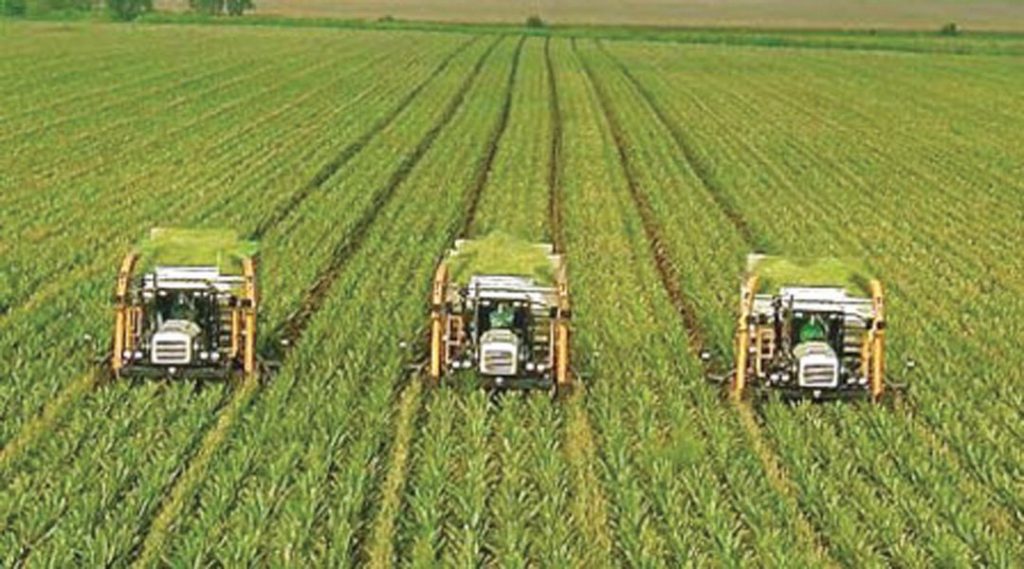The beautiful state of Ohio also faces issues and activities that affect its environment.
This detailed research will delve into some of the key environmental issues in Ohio and explore their causes, impacts, and potential solutions.
Everyone needs access to unpolluted air for breathing and clean water for consumption. But, while we strive to maintain a pristine environment, we also appreciate the modern comforts that also contribute to pollution.
These include air emissions from power plants and vehicles, as well as the generation of hazardous waste like leftover paints, fertilizers, and cleaning agents.
Ohio, a state located in the Great Lakes region of the United States, faces a range of environmental challenges that impact its natural resources, public health, and the overall well-being of its residents.
To handle these environmental issues, The Ohio Environmental Protection Agency(https://epa.ohio.gov/monitor-pollution/pollution-issues), a reputable leader and environmental caretaker, employs innovation, high-quality service, and public engagement to safeguard a safe and healthy environment for all Ohio residents.
As a state agency, the Ohio EPA is dedicated to preserving the environment and promoting public health by ensuring adherence to environmental laws.
Their responsibilities include:
- Establishing and enforcing standards for air, water, and waste management.
- The remediation of sites contaminated with hazardous substances.
- The agency also offers financial aid to businesses and communities and conducts environmental education programs for both businesses and the public.
- Provides assistance in pollution prevention to help businesses minimize waste at its source.
Ohio EPA operates through various regulatory divisions(https://epa.ohio.gov/divisions-and-offices), each playing a distinct role in the protection of the environment.
The List of Environmental Issues in Ohio
- Water Pollution
- Air Quality
- Climate Change
- Deforestation and Habitat Loss
- Algae Bloom
- Waste Management
- Invasive Species
Water Pollution
One of the most pressing environmental concerns in Ohio is water pollution. The state’s water bodies, including the Great Lakes, rivers, and streams, suffer from contamination due to various factors.
Hundreds of companies discharge pollutants into the Ohio River and its tributaries.
Agricultural runoff, industrial discharges, urban stormwater runoff, and sewage overflows contribute to high levels of pollutants in the water, such as nutrients, heavy metals, and pathogens.
Effects
This pollution not only affects aquatic ecosystems but also poses a significant threat to public health, making waterborne diseases and toxins a major concern.
State agencies issue permits for this practice under authority granted by the U.S. EPA under the Clean Water Act.
Air Quality
Air quality is another critical environmental issue in Ohio, particularly in urban areas like Cleveland, Cincinnati, and Columbus.
Emissions from vehicles, power plants, and industrial facilities lead to the formation of ground-level ozone and particulate matter.
The Effects:
- Exacerbated respiratory problems and asthma-causing conditions and other serious health issues such as Cardiovascular disease, and nervous system impacts.
- Permanent damage to the brains of children leads to developmental delays, learning disabilities, and birth defects.
- Poor air quality also impacts the state’s natural resources, and ecosystems, and contributes to climate change.
Federal laws such as the Clean Water Act and Clean Air Act and their state counterparts place restrictions on what can be emitted and discharged from factories, including power plants.
Climate Change
Ohio is experiencing the effects of climate change, including rising temperatures, altered precipitation patterns, and more frequent extreme weather events.
The Effects:
These changes can disrupt agriculture, impact ecosystems, and lead to increased instances of flooding, heat waves, and droughts.
Mitigating and adapting to climate change is a significant challenge for the state, necessitating a transition to cleaner energy sources and implementing climate resilience measures.
Governments around the world, including state and local entities in the U.S., are enacting policies to try to curb the emission of greenhouse gasses.
Deforestation and Habitat Loss
Historical land use practices and urban sprawl have led to deforestation and habitat loss in Ohio.
Since the 1800s, when navigation on the Ohio River first started and mills began harnessing hydropower, extensive alterations have been made to the river and its navigable tributaries.
These changes involved dredging, damming, and channelization to facilitate power generation and flood control. Consequently, the hydrology and ecosystems within the watershed have been significantly and permanently impacted.
As a result, various historically abundant animal species, including several freshwater mussel varieties, have faced extinction, endangerment, or the threat of extinction.
Also, cutting down forest trees can have acute impacts (such as runoff from cleared land), and long-term consequences (such as habitat loss and climate change).
The conversion of forests and natural habitats into agricultural fields, residential areas, and commercial developments has fragmented ecosystems and threatened the survival of various plant and animal species.
Restoring and protecting these habitats are vital to preserving Ohio’s biodiversity and ecological balance.
Fracking and Fossil Fuel Extraction
Ohio has seen an increase in hydraulic fracturing (fracking) activities, which involve the extraction of natural gas and oil from shale formations.
While this industry has brought economic benefits, it also raises concerns about water contamination, air pollution, and the release of greenhouse gases. The practice also discharges recovered fracking water to local treatment plants
Proper regulation and oversight are necessary to ensure responsible and sustainable extraction practices.
ORF works with its partners to monitor state and federal enforcement of existing regulations and laws against polluters who violate the law.
Algae Bloom
The primary contributors to the growth of algal blooms are nutrients, specifically phosphorus, and nitrogen. The Ohio River has experienced significant algal blooms recently, with smaller blooms occurring in its tributaries.
Some of these blooms have been caused by toxic cyanobacteria, posing risks to water supplies and aquatic life.
To address and diminish the occurrence of such algal blooms, it is crucial to reduce the discharge of nutrients into rivers.
This involves implementing more effective measures to control runoff from agricultural lands, which are a major source of these nutrients.
ORF collaborates with partners to exert pressure on regulators for stronger enforcement of the Clean Water Act, aiming to reduce nutrient pollution in the watershed.
Waste Management
Proper waste management is a challenge in Ohio, as it grapples with issues related to landfill capacity, recycling rates, and illegal dumping.
Landfills can release harmful chemicals into the environment, while inadequate recycling efforts contribute to the accumulation of waste in landfills.
Implementing comprehensive waste reduction and recycling programs is crucial to minimize the environmental impact of waste disposal.
Invasive Species
The introduction and spread of invasive species in Ohio have disrupted native ecosystems, leading to the decline of indigenous plants and animals.
Invasive species like the emerald ash borer, Zebra Mussels, and Asian carp threaten forested areas and aquatic habitats, respectively.
Combating the spread of these invasive species requires effective management strategies and public awareness.
Federal, state, and local agencies, along with organizations like the Ohio River Valley Cooperative Invasive Species Management Area (which ORF supervises), are making diligent attempts to decrease the presence of various plant species.
These include bush honeysuckle, pear, lesser celandine, autumn olive, and numerous others. Additionally, ORF is collaborating with local communities to manage and eliminate these invasive species from public lands.
The Potential Solutions To Environmental Issues in Ohio
Addressing the environmental issues in Ohio requires collaborative efforts from government, industries, communities, and individuals.
Some potential solutions include:
- Strengthening Environmental Regulations: Enforcing and enhancing environmental regulations can help control pollution and protect natural resources.
- Promoting Clean Energy: Transitioning to renewable energy sources can reduce greenhouse gas emissions and combat climate change.
- Investing in Sustainable Agriculture: Encouraging sustainable farming practices can minimize agricultural runoff and water pollution.
- Enhancing Public Transportation: Improving public transportation systems can reduce traffic congestion and emissions, straightening up air quality.
- Conserving Natural Habitats: Establishing protected areas and wildlife corridors can safeguard biodiversity and restore damaged ecosystems.
- Educating the Public: Raising awareness about environmental issues can foster a culture of conservation and responsible resource use.
- Supporting Recycling and Waste Reduction: Implementing comprehensive recycling programs and reducing single-use plastics can minimize waste accumulation.
Conclusion
Ohio faces a range of environmental challenges that require immediate attention and concerted efforts.
By addressing water pollution, improving air quality, mitigating climate change, protecting habitats, and adopting sustainable practices, Ohio can move towards a greener and more sustainable future, benefiting both its residents and the environment.
Implementing well-designed policies, investing in clean technologies, and fostering public engagement will be essential in safeguarding Ohio’s natural heritage for generations to come.


